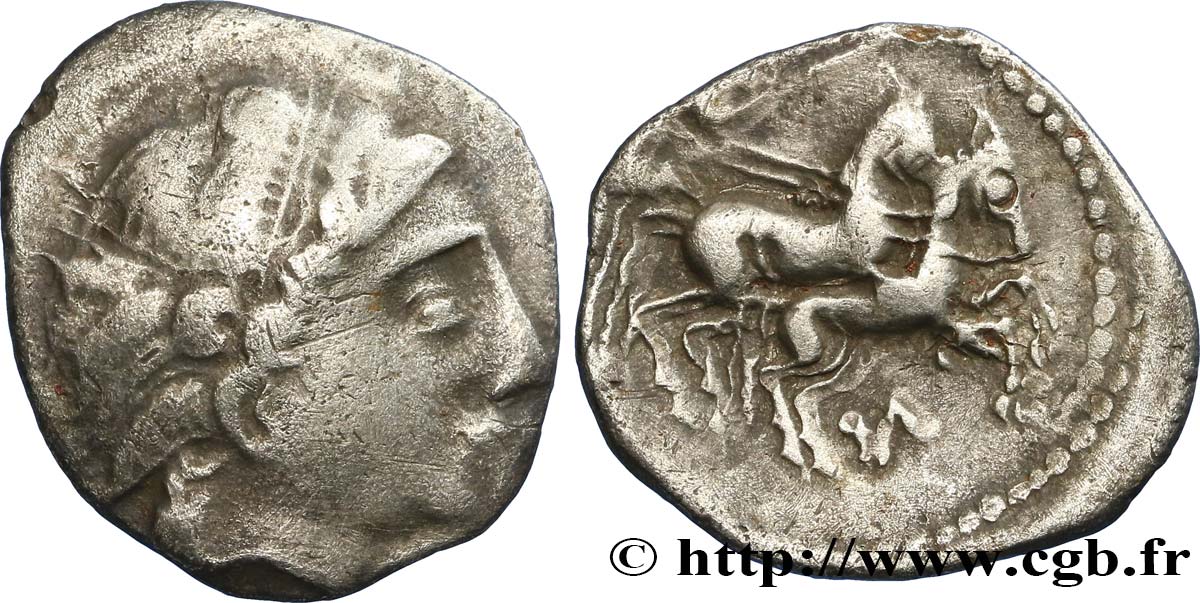Obverse
Obverse legend : ANÉPIGRAPHE.
Obverse description : Tête d’Apollon laurée à droite.
Reverse
Reverse legend : ANÉPIGRAPHE.
Reverse description : Bige à droite conduit par un aurige, une sorte d’N entre les jambes ; grènetis autour.
Commentary
Historical background
HOARD OF BRIDIERS (CREUSE)
(3rd - 2nd century BC)
Discovered around 1861 and described in the Memoirs of the Society of Natural and Archaeological Sciences of Creuse in 1862 by A. Fillioux, this treasure also bears the names of Trésor de Brède or de Breith. Bridiers, hamlet of La Souterraine (Creuse), is located at the northern limit of the territory of Lémovices and very close to two other peoples; Pictons to the west and Bituriges Cubi to the north. AT. Fillioux describes 36 coins, a number very close to that of the specimens currently known in the museums of Guéret (5 specimens), of the MAN of Saint-Germain-en-Laye (22 specimens) and of the Cabinet of the medals in Paris (8 specimens). If we add the examples reported in old private collections and if we consider the original endowments of Guéret (8 examples) and M. AT. NOT. (29 examples), we can be sure that the discovery included more than 36 coins and probably more than 50. The coins are in very good quality silver and the average weight of 76 examples (without flan accidents) coming from this workshop being 4.33 grams, we are indeed in the presence of drachmas. Despite the use of this monetary standard, these coins are not Greek and despite the choice of the initial prototypes, they are neither Massaliote nor Emporitan. The iconography is inspired by important monetary series; gold stater of Philip II of Macedon, heavy drachmas from Marseilles, drachmas from Emporia. We will thus have the possibility of a classification taking into account the reverses but it is obvious that that of Simone Scheers in five types taking into account the obverses is perfectly usable. Adrien de Longpérier, between 1862 and 1864, will be the first to point out to A. Fillioux the singularity of the reverses of these coins. It should be noted that the die engravers demonstrated a certain independence; we are in the presence of inspirational choices and not of more or less clumsy imitations. The treatment of these different themes will also use a certain number of symbols, the most remarkable of which will be the cauldron, an eminently Celtic object..








 Report a mistake
Report a mistake Print the page
Print the page Share my selection
Share my selection Ask a question
Ask a question Consign / sell
Consign / sell